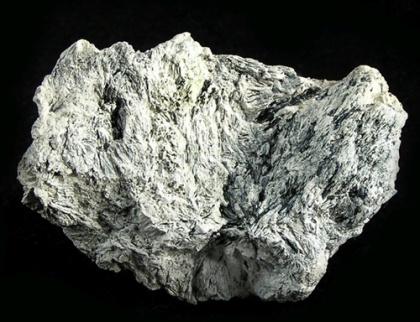The kaolinite is a clay mineral known for its practical industrial uses. Its common properties include a white streak, earthy luster, translucent crystals, with a basal cleavage (Detellier, 2018). The specific gravity generally makes up 2.6, and it is considered to be relatively soft (Detellier, 2018).
Other important characteristics include the major color variations, as the mineral can appear as white, colorless, or with yellow-greenish tones (Detellier, 2018). One property that is closely related to the practical use of kaolinite is its clay texture that appears with the addition of water. The chemical formula, describes its chemical properties as a complex salt of aluminum silicate hydroxide (Detellier, 2018).
The major deposits are located in European countries such as Germany, the United Kingdom, France, as well as certain regions of the United States. While these are the locations of the major deposits, small quantities are mined in Asian countries. Traditionally, kaolinite is mined using the open cast method from an open pit in the ground (The Kaolin and Ball Clay Association, n.d). Further extraction is completed with powerful monitor tools.
Ultimately, the resultant mix is filtrated to produce a homogenous composition. The mining procedure if followed by essential steps of perfecting the clay. These steps include separating, grinding, bleaching, modifying its texture and shape, and drying (The Kaolin and Ball Clay Association, n.d). Most importantly, the final procedures involved in kaolinite production depend on its future industrial applications.
The mineral is mainly used for ceramics, porcelain, paper, and specialty collection productions. In the first case, ceramics make up one of the largest sale areas for kaolinite as various forms of ceramic objects and tools are manufactured using this material (The Kaolin and Ball Clay Association, n.d). Moreover, paper quality is significantly improved through the use of the mineral’s clay properties to fill in the fibers. In that way, kaolinite’s relative softness, plasticity, convenient shape, and size allow mass production of the mentioned mineral-based objects.
Other important information about the mineral concerns its availability around the world. While kaolinite can contain various types of rare chemical elements, its own location involves several countries with many mining sites in each. In that way, the mineral is more common than its polymorphs, which explains its wide scope of industrial applications. At the same time, the procedures of modifying it are just as essential and can be quite time-consuming at times.
Furthermore, due to the importance of the multi-step manufacturing process, its ecological impact must be discussed as well. Statistical data demonstrates tonnes of secondary material being produced and removed for every kaolinite mining job. Still, researchers are developing new methods of reusing the material to improve the ecological situation (Cardoso da Silva et al., 2021). In that way, the additional raw material can be extracted for production purposes.

Although kaolinite played a significant role in the development of past cultures, including their art and pottery work, the field has evidently expanded during modern times. Past manufacturing goals included more custom handmade approaches, yet the current socioeconomic state of the world allows for greater production scales. Additionally, the novel mining tools that appeared not too long ago have made the process of extracting the minerals easier and faster, leading to better development of the whole sector.
Ultimately, the kaolinite family of minerals comprises unique characteristics related to their soft and multiform structure. The minerals can be molded and modified easily due to such structural properties. At the same time, they provide sufficient sturdiness for stable and firm objects to be produced eventually.
References
Cardoso da Silva, M. R. C., Malacarne, C. S., Longhi, M. A., & Kirchheim, A. P. (2021). Valorization of kaolin mining waste from the Amazon region (Brazil) for the low-carbon cement production. Case Studies in Construction Materials, 15.
Detellier, C. (2018). Functional kaolinite. The Chemical Record, 18(7-8), 868-877.
Lavinky, R. (n.d). Kaolinite. [Photograph]. The Arkenstone.
The Kaolin and Ball Clay Association. (n.d). What is kaolin? KaBCA.